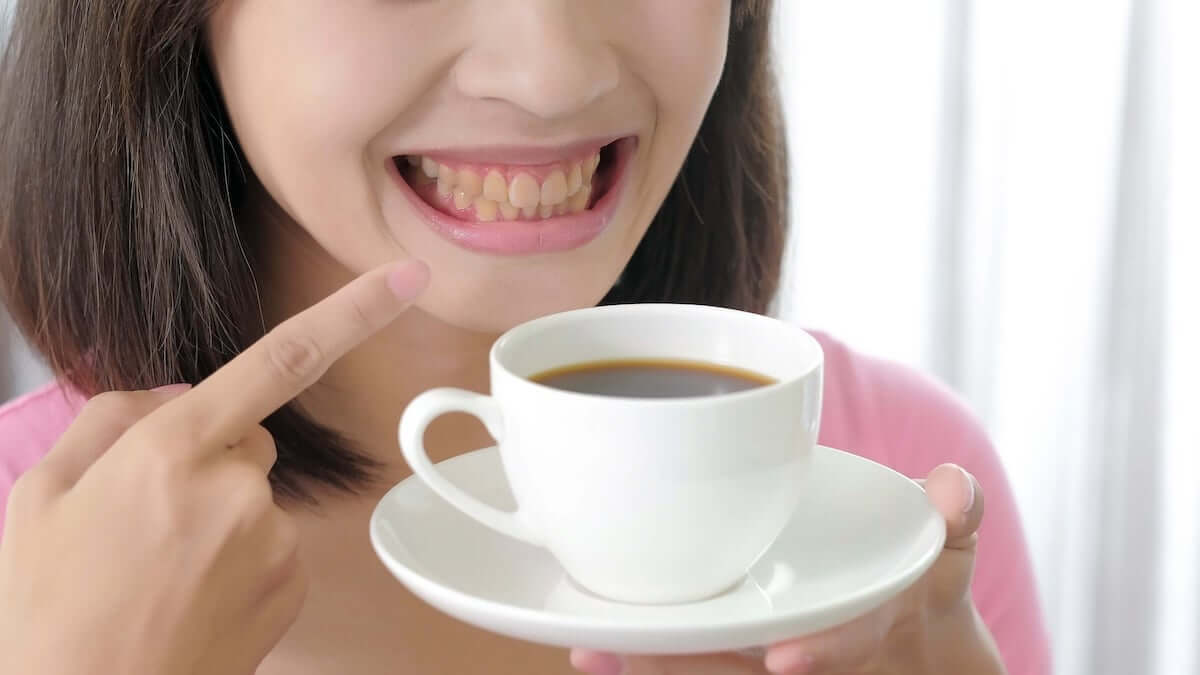For dental professionals, a gleaming smile is more than just aesthetics. It’s a window to oral health and overall well-being. But sometimes, that window gets a little cloudy, thanks to unwelcome stains and discolorations. Understanding the culprits behind these dulling effects is key to restoring smiles to their radiant best. So, let’s explore some of the most common causes of tooth discoloration and tips on how to maintain a bright, vibrant smile!
1. Coffee, Tea, and Wine
These beloved beverages, while undeniably delicious, pack a powerful staining punch. Their dark pigments, tannins, and chromogens bind to the porous enamel, leaving behind yellowish or brownish hues. Think of it as a vibrant watercolor painting gone rogue on your pearly whites.
Pro Tip: Enjoy your favorite drinks in moderation, and swish with water afterward to minimize staining. Opt for lighter-colored varieties or try herbal teas.
2. Tobacco
Smoking and chewing tobacco wreak havoc on oral health, and discoloration is just one of the problems associated with tobacco. Nicotine and tar act like unwelcome houseguests, clinging to the enamel and leaving behind stubborn yellow stains. It’s not just an aesthetic concern. Tobacco-stained teeth are often a telltale sign of deeper oral health issues.
Pro Tip: Quitting tobacco is the ultimate solution for both stain removal and overall health improvement. Seek professional help and support to make the journey smoother.
3. Plaque
This sticky film of bacteria and food debris is not just bad breath’s best friend; it’s also a prime culprit in tooth discoloration. Plaque creates a cozy haven for staining agents, allowing them to settle in and leave behind a dull, yellowish film.
Pro Tip: Brushing twice daily with fluoride toothpaste and flossing are your eviction notices for plaque.
4. Medications’ Unforeseen Effects
Certain medications, like tetracycline antibiotics used during childhood tooth development, can leave permanent yellow or gray stains. Antihistamines, antipsychotics, and some high blood pressure drugs can also contribute to discoloration.
Pro Tip: Discuss potential staining side effects with your doctor before starting any new medication. Ask about alternative options, or be prepared to give your smile extra TLC.
5. Medical Conditions
Some medical conditions like celiac disease, which impairs nutrient absorption, and amelogenesis imperfecta, a genetic disorder affecting enamel development, can weaken and discolor teeth.
Pro Tip: Early diagnosis and management of these conditions is crucial for preventing further discoloration and protecting oral health. Consult your doctor and dentist for personalized care plans.
6. Trauma
Accidents happen, and sometimes, our teeth take the brunt of the impact. Cracks, chips, and even internal bleeding can cause dark discolorations, like battle scars on your once-pristine smile. It’s a reminder that even the strongest smiles can be vulnerable to damage.
Pro Tip: Prompt dental intervention is key after any trauma. Depending on the severity, treatments like bonding, crowns, or even root canal therapy can restore both function and aesthetics.
7. Time
As we age, our enamel naturally thins, revealing the yellow dentin layer beneath. It’s like a gradual fading of a vibrant painting, leaving behind a softer, more vintage hue. But don’t mistake it for wear and tear; it’s just a testament to a life well lived!
Pro Tip: While aging-related discoloration is inevitable, good oral hygiene and regular dental care can slow down the process and maintain a vibrant, youthful smile.
8. Genetics
Tooth color, like many other traits, has a strong genetic component. Some individuals naturally have whiter teeth, while others are predisposed to yellowing or staining.
Pro Tip: Understanding your genetic predisposition can help you tailor your oral hygiene routine and treatment options. Consult your dentist to discuss any genetic factors that might impact your smile.
9. Fluorosis
While fluoride strengthens teeth, excessive exposure during tooth development can lead to white or brown spots on the enamel, a condition called fluorosis. It’s like a constellation of tiny imperfections formed by an overprotective guardian. Remember, balance is key — even when protecting your child’s smile!
Pro Tip: Consult your dentist about optimal fluoride levels for your child’s developing teeth. Using fluoridated toothpaste and mouthwash as directed can prevent fluorosis while still offering cavity protection.
10. Environmental Factors
Certain environmental factors, like excessive exposure to metals like iron or copper, can stain teeth. Additionally, some occupations involving exposure to dust or chemicals can contribute to discoloration. It’s a reminder that even the air we breathe can leave its mark!
Pro Tip: If your work environment puts you at risk of staining, talk to your employer about protective measures like masks or ventilation systems. Regular dental cleanings are extra important in such cases to remove accumulated stains.
Closing Thoughts
Remember, a discolored smile doesn’t have to be a permanent story. By understanding the varied causes and implementing personalized preventive measures, you can rewrite the narrative of your smile and keep it gleaming with confidence. So, smile bright, knowing that the culprit behind your stain has been revealed. The path to a radiant smile is paved with knowledge and TLC, so schedule an appointment with your dentist to discuss your concerns.

